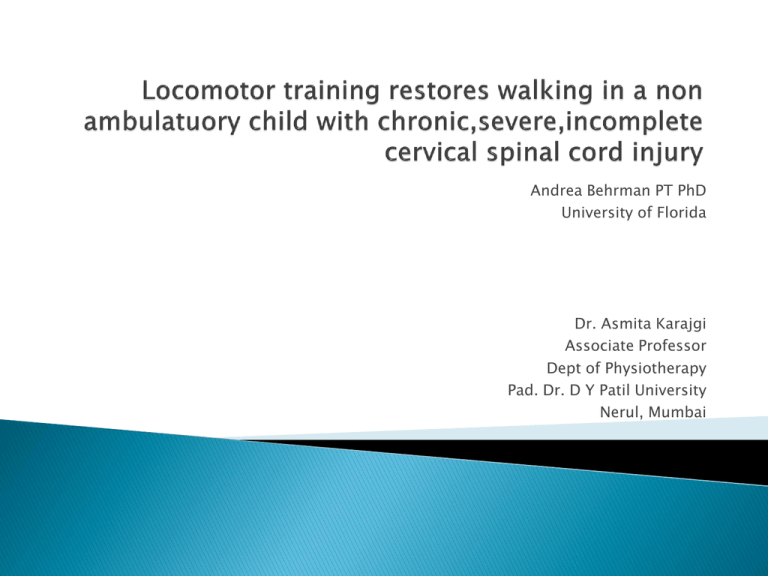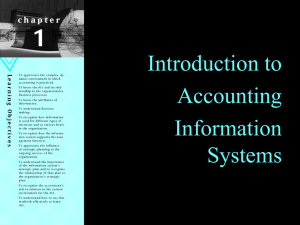locomotor_training_restores_walking_in_a_non_ambulatuory
advertisement

Andrea Behrman PT PhD University of Florida Dr. Asmita Karajgi Associate Professor Dept of Physiotherapy Pad. Dr. D Y Patil University Nerul, Mumbai Promising experimental approach Improves speed endurance step symmetry obstacle negotiation Case description- 4.5 yr old boy 16 weeks post injury(gunshot wound) low cervical spinal cord injury 3 months of inpatient rehabilitation+10 mth of outpatient rehabilitation improved from AIS –A to AIS –C with bilat C 8 function ‘a lot of extensor tone in quadriceps and no voluntary hip flexion ,ankle or toe movement’ could not stand independently prognosis-wheelchair bound prior to training – &Plantar flexors-1) ROM spasticity (quadriceps-2 ASIA impairement scale(Plantar flexors-2 for each leg) 76 sessions of locomotor training 20-30 minutes of step training with BWS on treadmill followed by 10-20 minutes of overground training with graded sensory cues. Assistance at the pelvis,trunk and each lower limb Training 5 times per week –45 sessions—76 sessions Upright posture &LE weight bearing without upper limb weight bearing Limb co-ordination with arm swing Aim of approximating normal walking speed 5 min –bout of step training on treadmill(stretches to hip flexors and dorsiflexors) followed by bout of stand training(BWS was reduced,manual pressure to knee and ankle extensors) Transfer to overground training ASIA –SAME (AIS –C with bilat C 8 function) Only hip flexors improved from 0 to 1 after 74 sessions Locomotor recoveryBaseline-nonambulatory 22 sittings-slight activity of ext and improved shoulder alignment with pelvis After 6 sessions of intense cueing-active contribution to stepping Noncued steps After 18 sessions (51-76)-independent use of posterior rolling walker Walking index score from 0 to 13/20 but no change in LEMS Gait speed 0.29m/s(self selected) &0.48 (maximum ) 2488 community based steps. Recovery only locomotor dependent SPGL- 2 components – 1 using sensory input by trainers 2 activation of SPGL by the patient Cortico brainstem spinal system activation











